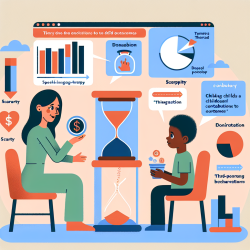Introduction
As practitioners dedicated to improving child outcomes, integrating evidence-based practices into our work is crucial. A recent commentary by Baranowski (2004) in the International Journal of Behavioral Nutrition and Physical Activity highlights the importance of combining diet and physical activity within the same research framework. This integration not only enhances our understanding but also paves the way for more effective interventions. Here, we explore how these insights can be applied in practice to enhance child development and health outcomes.
Understanding the Complementarity
The article emphasizes that diet and physical activity, though historically studied separately, share numerous complementary and interactive effects on physiological and behavioral processes. For practitioners, this means recognizing the intertwined nature of these factors when designing interventions. By considering both elements, we can better address issues such as obesity, diabetes, and other health-related challenges in children.
Implications for Practitioners
Practitioners can leverage the insights from this research in several ways:
- Holistic Assessments: When evaluating a child's health, consider both dietary habits and physical activity levels. This dual approach provides a more comprehensive view of the child's well-being.
- Integrated Interventions: Design interventions that simultaneously target dietary improvements and increased physical activity. For example, incorporating movement-based activities during therapy sessions while also discussing healthy eating habits.
- Collaborative Efforts: Work with other professionals, such as nutritionists and physical education teachers, to create a unified strategy for child health promotion.
Encouraging Further Research
While the commentary provides a strong foundation, further research is needed to explore the nuances of diet and physical activity interactions. Practitioners are encouraged to engage in or support research efforts that investigate these relationships, particularly in diverse populations and settings.
Conclusion
Integrating diet and physical activity into a cohesive framework offers a promising avenue for enhancing child health outcomes. As practitioners, embracing this holistic approach can lead to more effective interventions and better long-term results for the children we serve. By staying informed and actively participating in ongoing research, we can continue to improve our practices and make a significant impact on child development.
To read the original research paper, please follow this link: Why combine diet and physical activity in the same international research society?










